- Home
- Adam Thorpe
Hodd
Hodd Read online
About the Book
‘An extraordinary narrative… gripping and unrelenting in its remarkable portrayal of the underside of medieval society… No-one who reads this will think of Robin Hood and his merry men in quite the same way again’ Scotsman
Who was Robin Hood? A folk hero of Sherwood Forest who stole from the rich to give to the poor? The early ballads portray a quite different figure: impulsive, violent, vengeful, with no concern for the needy and no merry band.
Thus Hodd turns romantic legend on its head. The narrator, an elderly monk, recalls his boyhood as a minstrel in the greenwood, following a half-crazed bandit called Robert Hodd, who believed himself above God and beyond sin. But, as the monk slowly reveals Hodd’s true nature as a murderous felon, he must also wrestle with his own conscience, for it was his youthful ballads that elevated the outlaw into a popular hero.
‘A fascinating and complex novel – as remarkable in its way as Ulverton’ Times Literary Supplement
‘A tour de force… Wonderfully subtle and layered’ Literary Review
ALSO BY ADAM THORPE
Fiction
Ulverton
Still
Pieces of Light
Shifts
Nineteen Twenty-One
No Telling
The Rules of Perspective
Is This The Way You Said?
Between Each Breath
The Standing Pool
Poetry
Mornings in the Baltic
Meeting Montaigne
From the Neanderthal
Nine Lessons from the Dark
Birds with a Broken Wing
HODD
ADAM THORPE
This eBook is copyright material and must not be copied, reproduced, transferred, distributed, leased, licensed or publicly performed or used in any way except as specifically permitted in writing by the publishers, as allowed under the terms and conditions under which it was purchased or as strictly permitted by applicable copyright law. Any unauthorised distribution or use of this text may be a direct infringement of the author’s and publisher’s rights and those responsible may be liable in law accordingly.
Version 1.0
Epub ISBN 9781446434680
www.randomhouse.co.uk
Published by Jonathan Cape 2009
2 4 6 8 10 9 7 5 3 1
Copyright © Adam Thorpe 2009
Adam Thorpe has asserted his right under the Copyright, Designs and Patents Act 1988 to be identified as the author of this work
This book is sold subject to the condition that it shall not, by way of trade or otherwise, be lent, resold, hired out, or otherwise circulated without the publisher’s prior consent in any form of binding or cover other than that in which it is published and without a similar condition, including this condition, being imposed on the subsequent purchaser.
First published in Great Britain in 2009 by
Jonathan Cape
Random House, 20 Vauxhall Bridge Road,
London SWIV 2SU
www.rbooks.co.uk
Addresses for companies within The Random House Group Limited can be found at: www.randomhouse.co.uk/offices.htm
The Random House Group Limited Reg. No. 954009
A CIP catalogue record for this book is available from the British Library
ISBN 9780224079433
Contents
Cover
About the Book
Title
Copyright
Dedication
Also by the Same Author
Introduction
Translator’s Preface
Part One
Chapter 1
Chapter 2
Chapter 3
Chapter 4
Chapter 5
Part Two
Chapter 1
Chapter 2
Chapter 3
Chapter 4
Chapter 5
Chapter 6
Part Three
Chapter 1
Chapter 2
Chapter 3
Chapter 4
Chapter 5
Chapter 6
Part Four
Chapter 1
Chapter 2
Chapter 3
Chapter 4
Chapter 5
Chapter 6
Acknowledgements
in memory of my father
John smote of the munkis hed,
No longer wolde he dwell;
So did Moch the litull page,
For ferd lest he wolde tell.
John struck off the monk’s head,
No longer would he stay;
The like did Much to the little page,
For fear of what he’d say.
Robin Hood and the Monk
And now all the wood-ways live with familiar faces …
David Jones, In Parenthesis
Introduction
Robin Hood is a mystery. Apart from the thinnest of evidential shreds in judicial documents, there has been no proof (up to now) that he was ever anything more than a popular literary creation. He is first mentioned rather caustically by William Langland’s personification of a priestly Sloth in Piers Plowman, around 1377:
I can noughte perfitly my pater-noster as the prest it syngeth,
But I can rymes of Robyn Hood and Randolf erle of Chestre.1
Of the very rare ‘rymes’ of Robin Hood that survive in written form, the earliest is the poorly copied Robin Hood and the Monk, from a badly stained mid-fifteenth-century manuscript of miscellaneous texts. The poem was likely to have been recited by a minstrel rather than sung. As the following ‘Preface’ points out, it is to this so-called ‘ballad’ that the Hodd text bears an uncanny relation.
This scarcity of evidence has not prevented a wealth of conjecture, of course: J. C. Holt, in his definitive work on the subject,2 does not quite rule out the ‘Robert Hod, fugitive’ of the Yorkshire Pipe Roll of 1225 [de catallis Roberti Hood fugitivi], whose chattels are valued at 32s 6d by the royal justices, and who appears again as ‘Hobbehod’ in 1226. ‘Hobbehod’ may be familiar or derisory: ‘Hob’ being the Middle English diminutive for Robert, as well as a generic name for the common man, with a shadowy suggestion of ‘hobgoblin’. There is only one appearance of this diminutive in our text, which is hardly definitive, as ‘Hob the Robber’ is a stock term (see, for instance, ‘John Ball’s Letter to the Peasants of Essex’, a poem of 1381: ‘chastise wel hobbe the robber’). However, that obscure legal mention of a ‘Robert Hod’ is of crucial importance to the present book, as the reader will see; Professor L. V. D. Owen came across the name in 1936, the very year in which the translator of our (missing) document died, presumably unaware of the discovery.
It seems that as early as the mid thirteenth century – when the ballad as a literary form was already emerging in England – our hero was in full circulation as a legend; someone, perhaps a clerk, changed the name of William son of Robert le Fevere (a Berkshire robber) to William Robehod, on the King’s Remembrancer’s Memoranda roll of 1262.
There are numerous subsequent instances of criminals adopting or being given ‘Robinhood’ as a nickname or alias, as well as those of his companions (including Little John), in much the same way that, in our own day, Jack the Ripper’s grisly appellation resurfaces from time to time, granting a special gleam to the homicidal maniac. The underworld likes its myths: whether you are a small-time crook or a big-time gangster (or, for that matter, a terrorist), perhaps it helps to play a role bigger than yourself, to part-fictionalise your unpleasant acts, to fill out a flamboyant costume. Thus the Robin Hood legend spread, until by the mid fifteenth century it appears in written form, as lively ballad or crude play; echoed by the odd, terse (and mostly disapproving) chronicle entry, recording Hodd’s activities some two
centuries too late.
These early ballads, and most especially Robin Hood and the Monk, are bloody, amoral, fast-moving, tough. There is no Maid Marian or Friar Tuck, and certainly no Allin-a-Dale, plucking his little harp. Will Scarlett and Little John do appear – the latter usually at odds with the outlaw chief – as does Much the miller’s son. The Sheriff of Nottingham is already fair game, along with Guy of Gisborne and various despised members of the landowning Church, while the setting shifts erratically between Yorkshire and Nottinghamshire.
It has to be stressed that the Robin Hood of these early ballads cares not a nail for the poor. His attraction for the audience comes from his dash, bravery and wit, his anger against the landowning class, and his forest-dwelling difference from the mainstream. At heart, however, he is a homicidal gangster, although that is somewhat anachronistic when put into the context of a quasi-lawless, casually violent age.
The softer, cuddlier, more socially aware and romantic Robin Hood had to wait a while. His leap to mass popularity was probably via the springtide festivals during the fifteenth century, when he became Robin, King of the May Games – his queen deriving from a character called Marion in a thirteenth-century French pastoral play. Associated with the unruliness and disorder of the festivals, he also took on courteous, gentlemanly qualities, until by the time of Shakespeare it could be said that to live in the forest ‘like the old Robin Hood of England’ was to ‘fleet the time carelessly, as they did in the golden world’ (As You Like It, 1.1).
Despite that immortalising appearance, the outlaw was only to reach his literary apogee in the nineteenth century, with the best-selling novels of Sir Walter Scott (Ivanhoe) and Alexandre Dumas (Robin des Bois), before the medium of film turned him into his current incarnation as an international celebrity, symbolic of an antiestablishment justice, and as far from the Middle Ages as you or I.
Hodd is not the medieval thing itself, but a translation from the Latin of a lost original. This startling document came into my hands by complex chance some years ago, in the form of a printer’s foxed and dusty proof. The translator’s name is Francis Belloes.
A wealthy, amateur scholar, Belloes was born in Wiltshire in 1890; read history at Trinity College, Cambridge (overlapping with a student by the name of Ludwig Wittgenstein); fought in the Great War with the 2nd Hampshires until repatriated with a serious head wound in early 1918; returned to Trinity, where he sporadically tutored medieval history (having already contributed to various learned journals); lost his ancestral home in a fire on the night of 5 April 1922; and remained a bachelor to the day he died, poverty-stricken, in Paris in 1936, having dribbled away his hefty inheritance to cards.
We know from his textual commentary that, among other things, he had a red beard; that Ash Dunhay was in those days extremely ‘rustic’ (it is now a dormitory village); that his experience of the First World War was as nasty as any other combatant’s, leaving him not only with a head wound and probable shell shock, but also an anguished grief for at least one close friend. The odd, occasionally vehement, pencilled note in the margins of the proof (included and identified in bold as by ‘FB’ wherever of interest), add a tantalising human presence to the picture, but nothing more. Both the printers and the publishers have vanished without trace – along, perhaps, with the Latin transcription of Hodd, awaiting its scholarly edition.
Surprisingly, despite numerous searches in archives and on the web, I have identified only one photograph of Francis Belloes: it consists of a small, grainy newspaper image, showing a clean-shaven [sic] face accompanying the report of the fire in Ash Dunhay, which describes ‘the entire destruction of the Georgian manor house. Although modest in size it was of considerable elegance, and incorporated an Elizabethan wing with some original and finely-carved cherrywood panelling’.
The shadowy, phantom-like face could be anyone’s, I’m afraid.
A.T.
1 The Vision of William concerning Piers the Plowman in three parallel texts, ed. W. W. Skeat (Oxford, 1886), 1, 166 (B-text, Passus V, l. 401–2).
2 Robin Hood (London 1982, revised 1989). See also R. H. Hilton’s essay The Origins of Robin Hood in Past and Present, No. 14, November 1958.
Translator’s Preface
The translator of the following document must confess to being something of a felon himself.
The manuscript was rescued by him from the ruins of a bombarded church in what had lately been an isolated hamlet on the Somme, in the form of a leather-wrapped bundle tied with string, fallen open into the eviscerated crypt and looking as unprepossessing to the layman as all such documents do. The exigencies of warfare meant that no close examination was possible, and the hamlet along with the church having being wiped from the face of the earth by dint of being strategically vital, it was not clear to whom, or to what ecclesiastical authority, I should return this find. My superior officer, despite being the direct descendant of a twelfth-century baron, remained impervious to the delights of medieval scholarship, and was no help in the matter, finding it all a bit of a joke. He was killed by a sniper soon after.
Thus I found myself in sole possession of a bulky, stained and occasionally illegible manuscript, stitched crudely together with gut, on whose parchment pages the damp of many centuries had joined forces with worm (a particularly learned specimen had bored through the first thirty-five leaves), while the end of time itself seemed to be raging around me in the guise of a very modern doomsday.
I first unwrapped the find in a cellar, to the shivering light of a candle welling in its stub, while brick-dust powdered the air or fell upon the pages in sudden gasps, released by the pounding overhead. I lit a cigarette in preparation and then, through a faint pungency of chlorine gas (our position having been well soused the night before), found my weariness vanishing to a febrile excitement as I skimmed the ancient text.
The hand was a neat cursive in the customary two columns to a page, with errors of haste in the Latin that made it clear that this was a hired scrivener’s copy – probably mid-fifteenth-century – of an even earlier manuscript. There was little marginalia. My eyes repeatedly fell upon a name, in all its variant spellings, that echoed one far better known: Hod. I seemed to be in the possession of a text of quite extraordinary significance to the deep culture of England.
I was, indeed, somewhat surprised to discover that the author and his subject were so thoroughly English – even though, as a medievalist, I know how much more genuinely ‘international’ those times were than our own secularised and violently nationalistic present. Even in the so-called hundred years of peace that are now (1921) to replace many hundreds of years of European warfare, I doubt we shall return to the common culture of those times. Like Gerald the Welshman and many similar before him, our provincial author (who is aged about fourteen or fifteen in 1225, thus making him an astonishing ninety-four in 1305, one of the stated years of composition) was able to converse in the scholar’s lingua franca of Latin.
It seems, from the sparse indications in the text, that he spent the bulk of his adult life in the abbey of Whitby; this does not preclude him having had contact with, or even visiting, the place where I discovered the manuscript, in the rolling hills of Picardy: local historians declare the (now-obliterated) church and its grounds to have contained vestiges of abbatial origins. But why or how this copy ended up there remains a mystery; unless it was thought too inflammatory for its country of origin, and was hid as a result – the original being destroyed.
My own subsequent collision with the rock-hard god of war, and the many months of convalescence required, allowed me a period in which to sink deeply, as it were, into this strange and resonant text, and attempt a first tilt at translation. Despite a lack in him of that extraordinary generosity, compassion and tolerance one finds in that later teller of tales, Geoffrey Chaucer, my fondness for the author grew: and it must be remembered that he is not a raconteur or fabulator (although not without literary skills and sensitivities), but a devout old man conf
essing of a dramatic and rather terrible past.
Tireless research on my part has uncovered no trace of the ur-manuscript, nor a single clue as to the identity of the author. I have risked my health, my nerves and my eyes in scouring countless manuscripts, and have been misled many times – even so far as to be standing on Billingsgate Wharf at 5 a.m., having been informed that a particular fish-porter under one of those curious leathern hats was the possessor of a single sheet of ‘antique’ writing, upon which the name ‘Hod’ could be clearly delineated. The poor man, somewhat bewildered, pointed me to nothing more ancient than last week’s newspapers on a hook, ‘to wrap abaht cod’, and while the term ‘Billingsgate’ as a synonym for coarse language has long since passed into the domain of pointless slander, its aspersion on the homonymous market was briefly justified on my realisation that a hoax had been perpetrated upon me by a mischievous colleague.
There is no fishy smell, however, about the text’s clear parallels with the earliest of the Robin Hood ballads, Robin Hood and the Monk (Cambridge University MS Ff.5.48). This is a version dated to about 1450 – a century and a half after ours was penned – and written (as all the outlaw’s ballads are) in English, but based on much earlier sources. There are many startling similitudes of narrative and detail between this ballad and our own manuscript, going far beyond the generic or the conventional (the monk’s ‘wide head’, for instance), as well as an atmosphere of savagery, crazed beliefs and revenge not usually associated with the romanticised figure of the greenwood Robin we are accustomed to from later times; an atmosphere most clearly delineated in Robin Hood and Guy of Gisborne (British Museum Library Add MSS 27879), whose antique, peculiarly pagan or ‘folkloric’ details also seem to be anticipated by our text. The geographical coincidences need no comment, and I have myself (in a motor bus and on foot) visited and sketched the relevant areas to the point of exhaustion, from Nottingham’s busy heart to obscure brown woods – although the struggle to conjure the thirteenth century through a mind cluttered by petrol stations, hosiery, toasted scones, coke smells and the Player’s factory took considerable effort of imagination, and most succeeded in the emptier, muddier stretches of the Midlands landscape. Yet still it was as in the British Museum picture galleries on so-called ‘student’s days’, when the easels of the copyists interfere with the free view of the paintings: for all their fidelity, my own conjurings obtruded upon the real thing, which is forever lost, and merely (and rather tantalisingly) haunts.

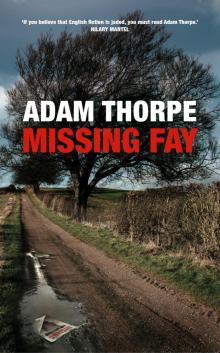 Missing Fay
Missing Fay Hodd
Hodd Pieces of Light
Pieces of Light The Standing Pool
The Standing Pool Ulverton
Ulverton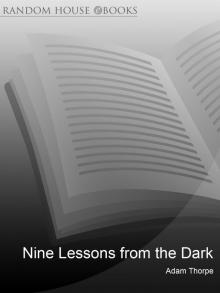 Nine Lessons From the Dark
Nine Lessons From the Dark Flight
Flight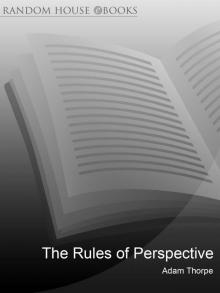 The Rules of Perspective
The Rules of Perspective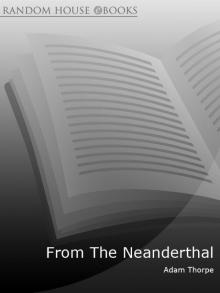 From the Neanderthal
From the Neanderthal Is This the Way You Said?
Is This the Way You Said? Still
Still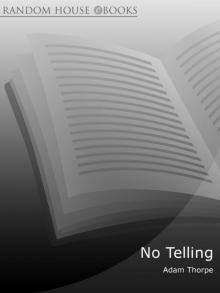 No Telling
No Telling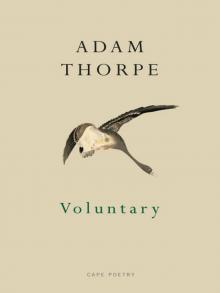 Voluntary
Voluntary Between Each Breath
Between Each Breath